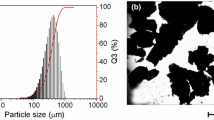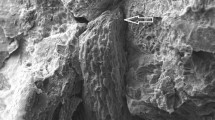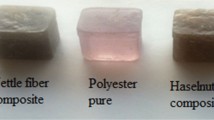Abstract
The possibilities of utilizing wastes of linen thread production (chaffs, spinning and roving losses) in recycled polyolefin composites have been investigated. The wastes were mixed with recycled polyethylenes (produced from domestic and industrial film production wastes). The physicomechanical properties (tensile strength, bending and tensile moduli, and water resistance) and the fluidity (melt flow-behavior index) for systems with a different filler content are estimated. Almost all the composite materials obtained have satisfactory fluidity (melt flow-behavior index is not lower than 0.07–0.15 dg/min). For all types of the composites, a slight increase in tensile strength and a considerable increase (3–7 times) in bending and tensile moduli were observed. The water resistance of the composites decreased with an increase in the filler content. The modification of filled systems with diisocyanates (diphenylmethane diisocyanate) improved the useful properties and water resistance of all the composites investigated.
Similar content being viewed by others
References
Ya. A. Kajaks, V. N. Bulmanis, S. A. Reihmane, and M. G. Tsiprin, “Effect of the composition and concentration of fibrous wastes from linen yarn production on the physicomechanical properties of polyolefin composites,” Mech. Compos. Mater.,33, No. 3, 293–298 (1997).
Ya. A. Kajaks, V. N. Bulmanis, S. A. Reihmane, and M. G. Tsiprin, Effect of modifying additions on the physicomechanical properties of composites based on polyethylene and wastes from linen yarn production,” Mech. Compos. Mater.,33, No. 4, 381–385 (1997).
Kit L. Yam, Binoy K. Gogol, Christofer C. Lai, and Susan E. Selke, “Composites from compounding wood fibres with recycled high density polyethylene,” Polym. Eng. Sci.,30, No. 11, 693–699 (1990).
M. M. Sain, C. Imbert, and B. V. Kokta, “Composites of surface-treated wood fiber and recycled polypropylene,” Angew. Macromol. Chem.,210, No. 3586, 33–46 (1993).
R. A. Padilla and S. A. Sanchez, “Development of new composite materials from waste polymes, natural fibre, and mineral fillers,” J. Appl. Polym. Sci.,29, 2405–2412 (1984).
A. K. Bledzki, S. A. Reihmane, and J. Gassan, “Properties and modification methods for vegetable fibres and natural fiber composites,” J. Appl. Polym. Sci.,59, 1329–1336 (1996).
P. R. Hornsby, E. Hinrichsen, and K. Tarverdi, “Preparation and properties of polypropylene composites reinforced with wheat and flax straw fibers. 2. Analysis of composite microstructure and mechanical properties,” J. Mater. Sci.,32, No. 4, 1009–1015 (1997).
P. R. Hornsby, E. Hinrichsen, and K. Tarverdi, “Preparation and properties of polypropylene composites reinforced with wheat and flax straw fibers. 1. Fiber characterization,” J. Mater. Sci.,32, No. 2, 443–449 (1997).
T. T. Lethi, H. Gauther, R. Gauther, and B. Charbert, “Realization of polypropylene/sisal fiber composites by reactive extrusion,” J. Mater. Sci.-Pure Appl. Chem.,A33, No. 12, 1997–2004 (1996).
R. G. Ray, B. V. Kokta, and C. Daneault, “Wood flour as a low-cost reinforcing filler for polyethylene: Studies on mechanical properties,” J. Mater. Sci.,25, 1851–1855 (1990).
D. Maldas, B. V. Kokta, and C. Daneault, “Composites of PVC-wood fibres. 4. Effect of nature of fibers,” J. Vinyl Techn.,11, No. 2, 136–148 (1989).
C. Joly, M. Kofman, and R. Gauthier, “Polypropylene/cellulosic fiber composites: chemical treatment of cellulose assuming compatibilization between the two materials,” J. Mater. Sci.-Pure Appl. Chem,A33, No. 12, 1981–1996 (1996).
J. A. Kajaks, S. A. Reihmane, and V. N. Bulmanis, “Linen yarn production waste utilization in thermoplastic polymer composites,” in: 8th International Conference on Mechanics and Technology of Composite Materials, Sofia, Bulgaria, Sept. 29–Oct. 2 (1997).
Gatenholm, P. Hedenberg, and C. Klason, “Cellulose fibres improve performance of mixed waste plastics. Recovery, recycling and reintegration,” in: Collected Papers of International Congress, Geneva, Switzerland, Feb. 1–3, Vol. 2 (1995), pp. 72–77.
J. M. Felix and P. Gatenholm, “Effect of transcrystalline morphology on interfacial adhesion in cellulose/polypropylene composites,” J. Mater. Sci.,29, 3043–3049 (1994).
J. M. Felix, P. Gatenholm, and H. P. Schreiben, “Controlled interactions in cellulose-polymer composites. I. Effect on mechanical properties,” Polym. Compos.,14, No. 6, 449–457 (1993).
Author information
Authors and Affiliations
Additional information
Translated from Mekhanika Kompozitnykh Materialov, Vol. 35, No. 2, pp. 199–210, March–April, 1999.
Rights and permissions
About this article
Cite this article
Kajaks, J.A., Reihmane, S.A. & Tsiprin, M.G. Physicomechanical properties of composites from recycled polyethylene and linen yarn production wastes. Mech Compos Mater 35, 139–146 (1999). https://doi.org/10.1007/BF02257244
Received:
Issue Date:
DOI: https://doi.org/10.1007/BF02257244




